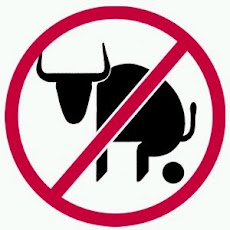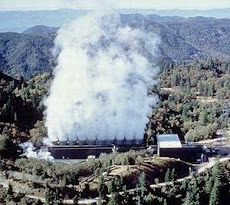Status Unknown: Anyone?
Location/Habitat
The nearest major population center is Ely, Nevada, located approximately 50 miles to the southwest in
White Pine County. The subject area is sparsely settled and rural in character. There are no towns within
the area. Contrasting and varied topography make the area visually pleasing. Topography consists of
valley floors, alluvial fans, canyons, mountains, steep ridges, and basins. The climate is semiarid.
Annual average precipitation varies from approximately 16+ inches at the higher elevations to 8 inches
or less at the lower elevations. The bulk of the precipitation occurs through early spring rains and winter
snows. Temperatures range from summer maximums in excess of 100 degrees to winter lows falling well
below zero. Major valleys in the HMA are Steptoe, North Spring and Antelope Valleys. Major mountain
ranges are the northern Schell Creek and Antelope. The southern Boone Springs Hills and Black Hills
are also familiar geographic features. No major streams flow in the area. Five small creeks (North, Chin,
Middle, Sampson and Sharp) are located in the Antelope and Schell Creek ranges. Elevation ranges from
5,700 feet in the valleys to the 10,008-foot Becky Peak in the Schell Creek Range. The soils of the
Antelope HMA reflect the extremes of elevation and topography. These vary from very shallow,
extremely stony soils of the higher elevations, to very deep, gravelly soils, to nearly gravel free silty soils
and playas of the lower valley floors.
The Antelope HMA is well watered in the upper elevations of the Schell Creek Range and North
Antelope Range. In other parts of the area water is not well distributed or is lacking. Available water is
provided via streams, springs, seeps, reservoirs, and wells. Where water currently exists, there appears to
be little conflict in consumption needs among foraging animals. Problems center around poor water
distribution in Spring Valley, the Black Hills, and South Antelope Valley, competition for space near
isolated waters, seasonal availability of well water and vegetation associated with the water. Water is
available throughout most of the HMA, but poor water distribution is a problem which results in uneven
use of available forage.
Antelope Herd Management Area
White Pine County, Nevada
Mining activity began in portions of the area as early as 1859. Four mining districts have been
established within the area with numerous isolated prospect pits scattered throughout the area. Little
activity is presently occurring but could increase as demand and technology change. Recreation in the
area is limited, with hunting and trapping being the major recreational activities. Very little sightseeing
or recreational horse viewing has been noted. This is probably due to the remoteness of the area. Some
post and wood cutting takes place, particularly in the Antelope Range. An area on the north end of the
Antelope Range has been set up as a commercial woodcut area. However, recreation and wood cutting
presently cause no major disturbance to wild horses.
Several species of wildlife occurring in the area are quite important. Mule deer, elk, pronghorn antelope,
mountain lions, coyotes, bobcats and kit foxes provide the main game and furbearer species. Blue
grouse, sage grouse, chukar partridge and cottontail rabbits constitute the major upland game species.
Two species of wildlife within this area are on the Federal Threatened and Endangered Species Listing.
Bald eagles, threatened, commonly winter in North Spring and Antelope Valleys. Peregrine falcons,
endangered, have been known to migrate through this area. No nests are known to occur. Three species
in the area are on the federal list of species which may be proposed for threatened and endangered status.
Spotted bats may occur in the area which is well within its range of occurrence. Steptoe dace which
occur in Lookout Spring are listed as sensitive species by the State of Nevada and the federal
government. Ferruginous hawks nest within the area.
This area has traditionally been grazed by domestic livestock since the existing ranches were established
in the late 1800s. Historically, both cattle and sheep have grazed the area, but primary use was by large
nomadic bands of sheep. During the 1950s most of the livestock operators converted from sheep to cattle
due to economic conditions which have prevailed to the present time, although some sheep grazing still
occurs.
Vegetation
Major ecosystems/plant communities in the area are the pinyon-juniper woodland and the cold desert
ecosystem. At higher elevations, small isolated communities of coniferous forest occur. The cold desert
ecosystem is composed of two major vegetation zones, the shadscale zone and the sagebrush zone.
The pinyon-juniper zone, scattered throughout the area, generally occurs at 6,000-8,000 feet between the
shrub zone in the valleys and the conifer zone at higher elevations of the Schell Creek and Antelope
Ranges. Stands of these trees vary in density from scattered to closed (solid) stands. The shadscale zone
is found mostly in the bottoms of the Antelope and North Spring Valleys. Plants in this zone must have a
higher salinity tolerance than in other areas. Important plants in this zone are shadscale, winterfat, black
sagebrush, and black greasewood. This zone serves as important winter range for both wild horses and
livestock, and a yearlong pronghorn antelope range. Despite the low productivity, the protein content of
species within this zone is high. The sagebrush zone, which is scattered throughout the area, occurs
between 5,500 feet and 7,000 feet. Big sagebrush, along with desirable perennial grasses and forbs occur
in this zone. This zone is important to livestock as a spring-fall range. Wild horses use this area for
yearlong forage. Mule deer and Rocky Mountain elk use this zone yearlong and it is especially important
for winter forage. Sage grouse are dependent on this zone for nearly all aspects of their life cycle. Some
stands of big sage can and have become very dense and closed. The coniferous zone is generally located
at 9,000 feet or higher. Large fir and pines characterize this zone; understory vegetation is sparse. Mule
deer, elk, and wild horses use these areas in summer for forage and shading. Eagles, hawks, and blue
grouse need this zone for nesting, wintering and roosting.
Throughout each of these zones, small riparian areas occur with seeps, springs and creeks. Vegetation
found in these areas need wetter conditions than surrounding plants. Rushes, sedges, forbs and
deciduous trees that rarely occur elsewhere are found on these sites. All large ungulates, small wildlife,
wild horses and livestock use these areas for water, shade, succulent forage and to pick up trace minerals
from the different vegetation. Sage grouse chicks are especially dependent on these areas for insects and
forbs until they are able to survive on a sagebrush diet. Some hawks, such as Cooper's and goshawk are
dependent on these areas for nesting. Riparian areas are used by and are depended on by up to 97 percent
of the non-game wildlife species that occur in the HMA.
Herd Description
Wild horses use the HMA on a yearlong basis. The horses in the area of the Schell Creek Range
primarily graze in Spring Valley during the winter and early spring; some also graze in Steptoe Valley on
the west side of the Schell Creek Range and in Antelope Valley on the east side of the Antelope Range.
Horses in this area will stay in the pinyon-juniper zone on the lower benches during the day and graze the
valley bottoms in the evening. During open winters when there is little snow on the Schell Creek Range
and Antelope Range, the horses will stay high on the open slopes and will not move down into the
valleys. It is possible to see a few horses in this area at all different elevations during any time of the
year, but the majority of the bands will follow a migrational pattern based on climatic and seasonal
conditions. There is also movement of horses from the north end of Becky Peak and the north end of the
Antelope Range into the Elko District to the north. This movement is based on seasonal and climatic
conditions when snow levels on these mountains force horses down into the lower elevations in the Elko
District.
The horses in the area of the Goshute Mountains generally graze in the low, rolling mountains on a
yearlong basis, and horses on the west and southwest sides of the Goshute Mountains move into Antelope
Valley and graze there. During the summer months, horses in the Ferber Flat area in the Elko District
move down into the Ely District closer to water. During the winter, when snow is available, they will
move back into the Ferber Flat area. Horses occupying the Goshute Mountains move freely back and
forth between the Ely and Elko Districts, and into Utah.
Horses have always been a part of the range scene, at least since contemporary livestock use began. In
several cases, homesteaders, ranchers, and miners would turn horses out on the range during the winter
when weather prevented them from using horses for their occupational needs. In the spring, they would
roundup, sort out, and keep those that were fit for work. Remaining horses would be turned out or sent to
processing plants. Due to the natural tendency of domestic animals to go wild, many horses escaped and
were never retrieved. There were always some horses left on the range. Although it is not known exactly
when horses first inhabited the Antelope HMA or what their early numbers were, it is evident that they
have occupied the area for quite some time. History of wild horses in the area before 1971 is sketchy and
not very well documented. Approximately 100 horses resided in the Becky Creek area. Others were
known to exist in the Chin Creek area, Antelope Valley, Dolly Varden, and Ferber Flat. It is known that
some animals were captured near Becky Spring in Horse Canyon prior to 1971. There is some evidence
that the Army Remount Service was active in at least part of the area. When they were in operation
during the early 1900's through 1940, remount stallions of various breeds were released on the range to
upgrade the existing herd. These stallions were mainly thoroughbreds or Morgans, but a few draft blood
lines were introduced to develop a hardier strain for pulling supply wagons and heavy artillery. Native
stallions were often shot to allow breeding dominance by the remount stallions.
http://www.nv.blm.gov/ely/pdf/antelope_hma.pdf
Saturday, November 7, 2009
Subscribe to:
Post Comments (Atom)



















No comments:
Post a Comment